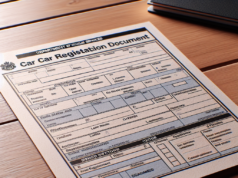Contents
- 1 Understanding the Upcoming Driver’s License Updates: A Comprehensive Overview
- 2 Key Reasons Behind the Revolutionary Changes in Driver’s License Regulations
- 3 How Technological Advancements Are Shaping the Future of Driver’s Licenses
- 4 What Citizens Need to Know About New Identification Requirements
- 5 Implications of Driver’s License Updates for Different Demographic Groups
- 6 Preparing for the Transition: Steps to Ensure Compliance with New Regulations

In an era marked by rapid technological advancements and evolving societal needs, significant updates to driver’s license regulations are on the horizon. These changes aim to enhance security, streamline processes, and adapt to the digital age. As governments worldwide prepare to implement these revolutionary updates, it is crucial for citizens to understand the implications and requirements that will accompany this transition. This article provides a comprehensive overview of the upcoming changes, the reasons behind them, and what individuals must do to stay compliant.
Understanding the Upcoming Driver’s License Updates: A Comprehensive Overview
The forthcoming updates to driver’s licenses are set to transform how identification is issued and utilized. These changes will include the introduction of digital licenses, enhanced security features, and a shift towards more standardized identification processes across states and countries. Digital licenses, accessible via smartphones, promise to provide a more convenient and secure way for individuals to carry their identification. Additionally, physical licenses will incorporate advanced technologies such as biometric data and holographic images to prevent counterfeiting and identity theft. As these updates roll out, it is essential for citizens to familiarize themselves with the new formats and functionalities of their driver’s licenses.
Key Reasons Behind the Revolutionary Changes in Driver’s License Regulations
The impetus for these revolutionary changes stems from several key factors, including the need for improved security, increased efficiency, and the growing demand for digital solutions. In recent years, identity theft and fraud have surged, prompting authorities to seek more robust measures to protect personal information. The integration of advanced technologies into driver’s licenses aims to mitigate these risks. Additionally, as society becomes more digital-centric, the convenience of having a driver’s license available on a mobile device aligns with consumer expectations for seamless access to services. Furthermore, standardizing identification processes across jurisdictions will facilitate smoother interactions between citizens and government agencies, ultimately enhancing public trust in the system.
How Technological Advancements Are Shaping the Future of Driver’s Licenses
Technological advancements are at the forefront of the upcoming changes to driver’s licenses. Innovations such as blockchain technology, artificial intelligence, and biometric identification are being harnessed to create more secure and efficient systems. Blockchain can provide a tamper-proof record of license issuance and renewal, while AI can assist in verifying identities through facial recognition and other biometric methods. Moreover, the rise of mobile applications allows for the secure storage and sharing of digital licenses, reducing the need for physical cards. These technologies not only enhance security but also streamline the process of obtaining and renewing licenses, making it easier for citizens to navigate the system.
What Citizens Need to Know About New Identification Requirements
As the updates to driver’s licenses are implemented, citizens must be aware of the new identification requirements that will accompany these changes. Many jurisdictions will require individuals to provide additional documentation when applying for or renewing their licenses, including proof of residency, identity verification, and, in some cases, biometric data. It is crucial for citizens to prepare these documents in advance to avoid delays in the application process. Additionally, individuals will need to familiarize themselves with the specific regulations in their state or country, as requirements may vary significantly. Staying informed about these changes will ensure a smooth transition to the new identification standards.
Implications of Driver’s License Updates for Different Demographic Groups
The updates to driver’s licenses will have varying implications for different demographic groups, particularly for young drivers, seniors, and marginalized communities. For young drivers, the transition to digital licenses may offer greater convenience and accessibility, allowing them to manage their identification more efficiently. Seniors, on the other hand, may face challenges in adapting to new technologies, necessitating additional support and resources to ensure they can navigate the updated systems. Marginalized communities may also encounter barriers related to access to technology or documentation requirements, highlighting the need for inclusive policies that address these disparities. Policymakers must consider these diverse impacts to ensure that the updates benefit all citizens equitably.
Preparing for the Transition: Steps to Ensure Compliance with New Regulations
To ensure compliance with the upcoming driver’s license updates, citizens should take proactive steps to prepare for the transition. First, individuals should review their current licenses and identify any necessary documentation required for renewal or application under the new regulations. This may include gathering proof of identity, residency, and any additional information mandated by local authorities. Second, citizens should stay informed about the timeline for the implementation of these changes in their jurisdiction, as well as any public outreach efforts or informational sessions provided by government agencies. Finally, individuals should consider familiarizing themselves with digital license applications and related technologies to ease the transition and enhance their understanding of the new systems.
In conclusion, the upcoming updates to driver’s licenses represent a significant shift in how identification is issued and utilized. With a focus on security, efficiency, and technological integration, these changes will impact citizens across various demographic groups. By understanding the reasons behind these updates, the new identification requirements, and the steps necessary for compliance, individuals can navigate this transition with confidence. As we move towards a more digital future, staying informed and prepared will be essential for ensuring a smooth adaptation to the evolving landscape of driver’s licenses.























